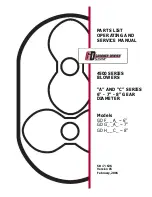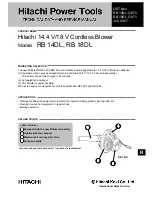
15
IMPORTANT: Running the electric starter extensively
can overheat and damage the starter.
If the engine does not start after the second
attempt, bring the snowthrower to an Authorized
Service Dealer for service.
C. When the engine starts, disconnect the power cord
from the snowthrower and the outlet.
4. With the engine running, push in the choke slowly.
Stopping the Engine
Turn the key to the Off position, and wait for all moving
parts to stop before leaving the operating position.
Starting the Rotor Blades
To start the rotor blades, squeeze the control bar and
handle together.
Stopping the Rotor Blades
Release the control bar to stop the rotor blades.
Note: When you release the control bar, the rotor blades
stop, but the engine continues to run.
Adjusting the Discharge Chute
Models 38428 and 38429 only
Move the chute handle left and right to adjust the
direction of the snow stream (Fig. 15). The chute deflector
handle on top of the discharge chute controls the height of
the snow stream. Do not overtighten the chute deflector
mounting locknuts.
m-3278
3
1
2
Figure 15
1.
Chute handle
2.
Chute deflector handle
3.
Deflector mounting
locknuts
IMPORTANT: Do not use the chute handle to lift the
snowthrower. This can damage the chute handle.
Models 38441 and 38442 only
Rotate the chute crank clockwise to move the discharge
chute to the right or counterclockwise to move the chute
to the left (Fig. 16). The chute deflector handle on top of
the discharge chute controls the height of the snow stream.
Do not overtighten the chute deflector mounting
locknuts.
2
3
1
629
Figure 16
1.
Chute crank
2.
Chute deflector handle
3.
Deflector mounting
locknuts
Throwing Snow
WARNING
POTENTIAL HAZARD
•
Stones, toys and other foreign objects may be
picked up and thrown by the rotor blades.
WHAT CAN HAPPEN
•
Thrown objects can cause serious personal
injury to operator or bystanders.
HOW TO AVOID THE HAZARD
•
Keep the area to be cleared free of all objects
that could be picked up and thrown by rotor
blades.
•
Keep all children and pets away from area of
operation.
•
The snowthrower clears down to the ground and
propels itself forward when you raise the handle. The
snowthrower tilts slightly forward so that rotor blades
strike the ground. The wheels do not need to touch the
ground to self-propel. The more you tilt the handle
forward, the faster the snowthrower self-propels.
•
Always overlap each swath and discharge the snow
downwind whenever possible.










































